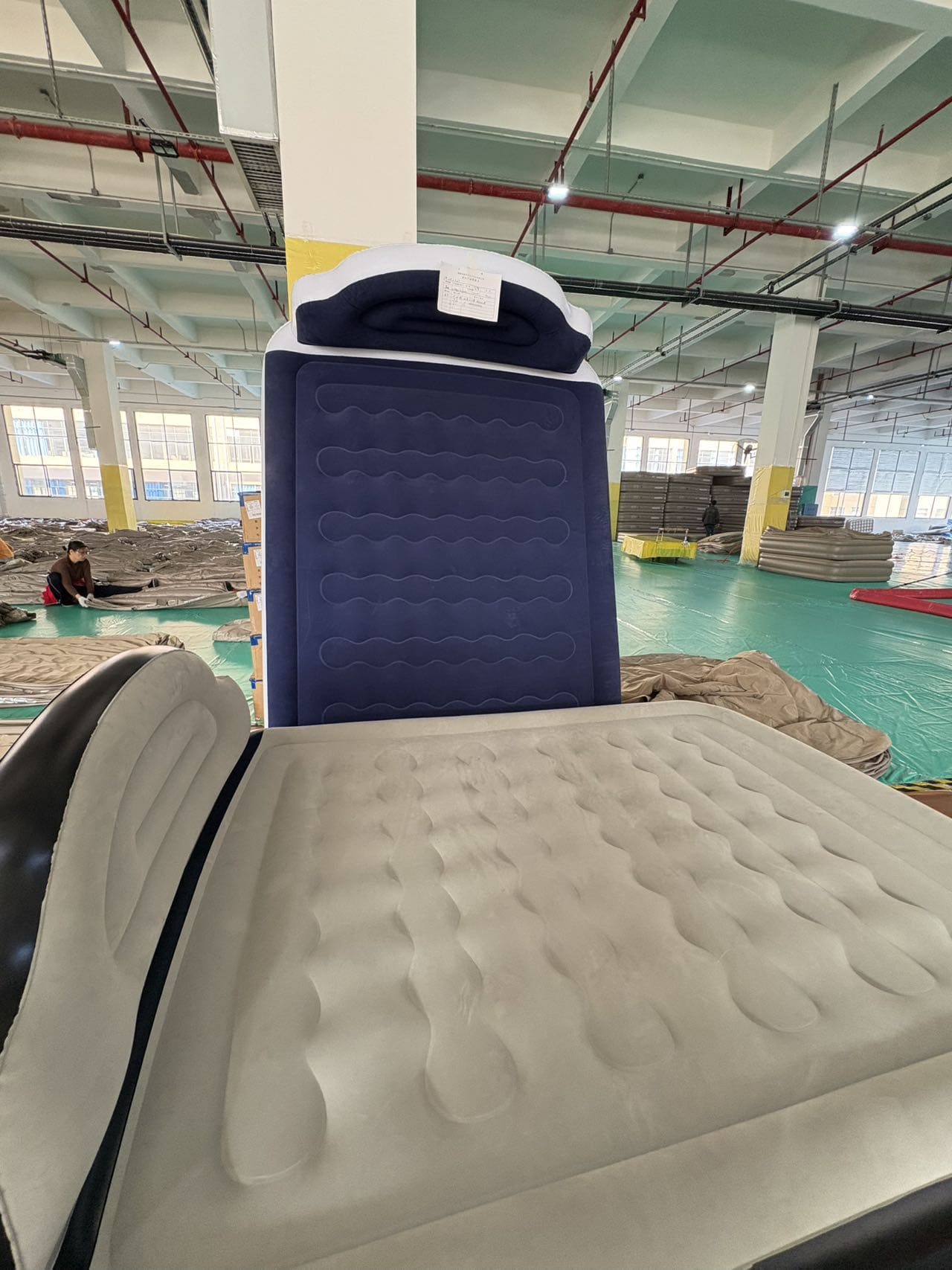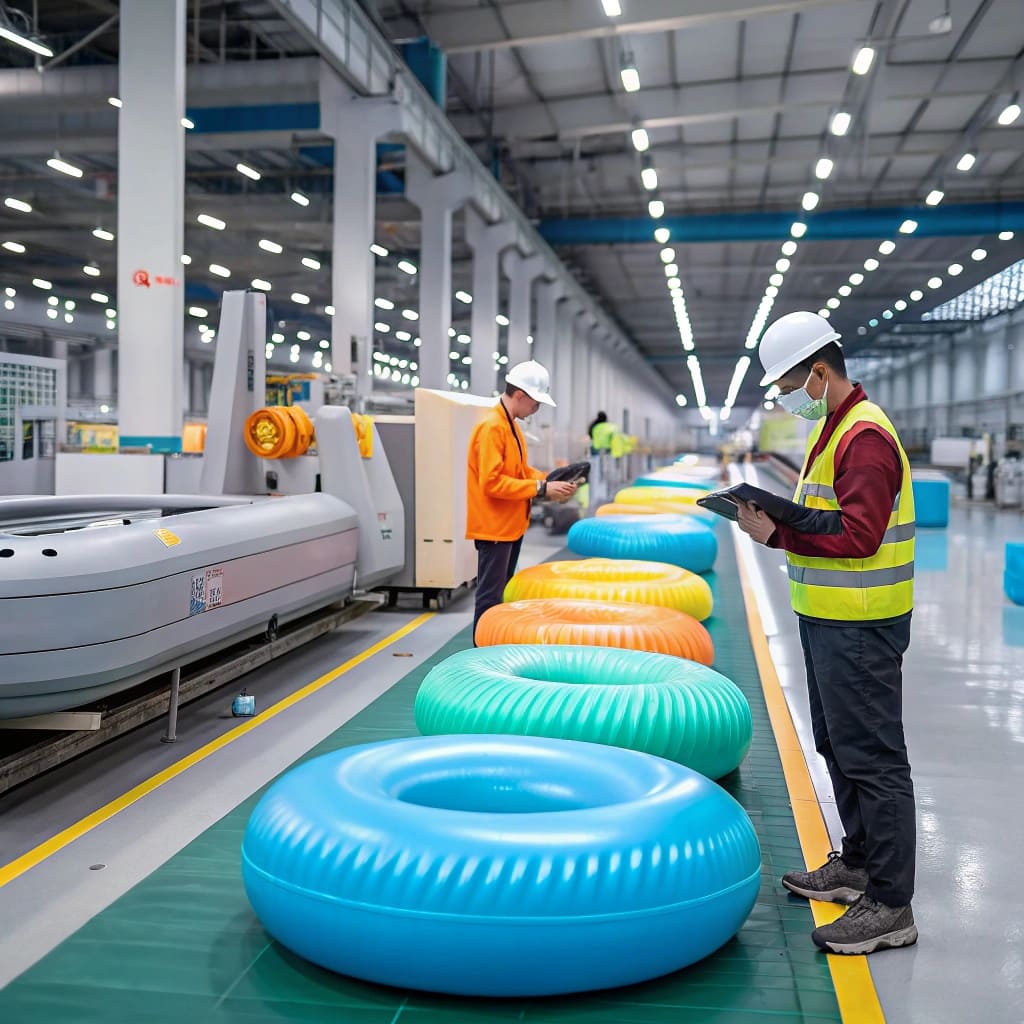How to Pick the Right Inflatable Valve Types and Pump Methods?
Struggling to select suitable valves1 and pumps2 for inflatable products can lead to poor quality, leaks, and unsatisfied customers. Knowing key options helps ensure better performance, cost control, and reliable results. Below are the main valve types and inflation methods3 to consider, along with guidelines for choosing the right pump4.
1. What Are the Different Types of Air Valves?
Uncertain about which valve ensures a tight seal? A wrong choice leads to leaks or unhappy customers. Here’s how to avoid pitfalls by picking the right valve type.
Common inflatable valves include One-Way Inflation Valves, Three-in-One Valves, Boston Valves, and Halkey-Roberts Valves. Each offers unique structures, benefits, and limitations for product design and user satisfaction.
One-way Inflation Valve
- Structure: Features a single flap or seal that allows air to enter but not escape.
- Usage: Common for pool floats, air beds, or other small to medium-size inflatables.
- Advantages: Easy to operate; minimizes accidental air loss during inflation.
- Disadvantages: Deflation may require applying pressure to the valve or removing the flap.

Three-in-one Inflation Valve
- Structure: Incorporates multiple ports or settings within a single valve assembly.
- Usage: Often used for larger inflatables like water slides or bounce houses, where quick inflation and deflation are essential.
- Advantages: Provides different openings for rapid inflation, gradual inflation, and deflation; reduces the need for multiple adapters.
- Disadvantages: Slightly more complex design, which may increase production cost.

Boston Valve
- Structure: A two-piece valve system, typically with a large valve opening and a separate cap for inflation and deflation.
- Usage: Commonly found on inflatable boats, premium air mattresses, and high-volume inflatables.
- Advantages: Allows quick and straightforward inflation; air doesn’t leak if the pump nozzle is removed during inflation.
- Disadvantages: Requires compatibility with specific pump nozzles; may cost more than simpler valves.

Halkey-Roberts Valve
- Structure: A robust, often marine-grade valve with an internal check mechanism and a spring-loaded pushpin.
- Usage: Popular on inflatable kayaks, rafts, and other commercial or heavy-duty products.
- Advantages: Offers high reliability and efficient sealing, even under intense pressure or rough conditions.
- Disadvantages: Typically more expensive; can be less intuitive for novice users who are unfamiliar with the pushpin mechanism.

Valve Comparison Table
| Valve Type | Main Feature | Pros | Cons | Best For |
|---|---|---|---|---|
| One-Way Inflation Valve | Single flap, no backflow | Easy to use, minimal air loss | Slower deflation | Small-medium inflatables |
| Three-in-One Valve | Multi-setting, integrated ports | Fast inflation/deflation | Complex design, higher cost | Large, high-volume inflatables |
| Boston Valve | Two-cap system | Quick inflation, secure air lock | Requires specific pump nozzle | Boats, premium air mattresses |
| Halkey-Roberts Valve | Spring-loaded pushpin | Extremely reliable, airtight seal | Pricier, less familiar operation | Commercial or heavy-duty products |
2. What Kinds of Inflation Methods Are There?
Tired of slow, inefficient inflations? Different methods cater to unique product sizes and environments. A well-chosen method speeds setup and boosts customer satisfaction.
Electric, rechargeable, battery-powered, hand, foot, and 12V car pumps each serve distinct needs. Direct mouth blowing can work for small inflatables, but bigger items often need powered options.
Electric Air Pump
- Power Source: Plugs into a wall outlet (AC).
- Pros: Rapid inflation, minimal effort, great for large inflatables.
- Cons: Requires access to electricity; less portable for outdoor settings without power.
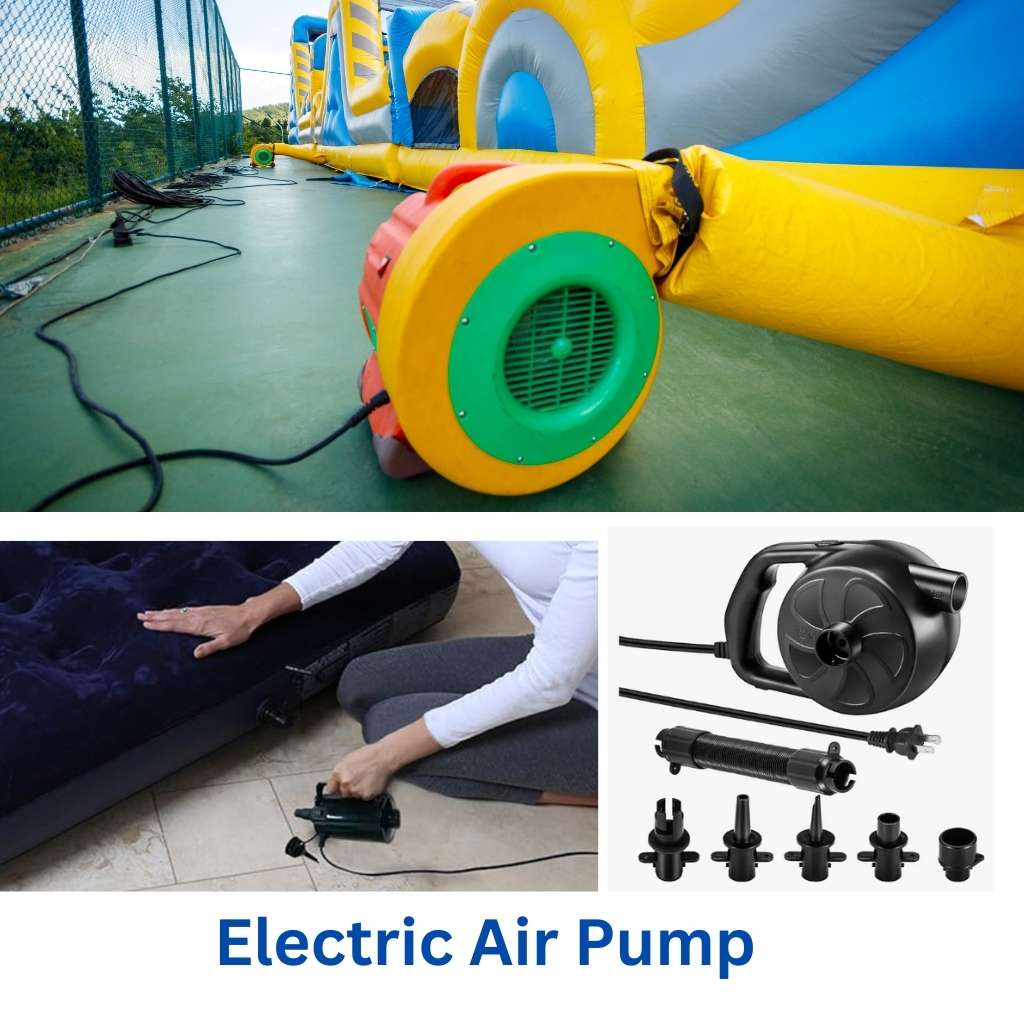
Rechargeable Air Pump
- Power Source: Internal battery, recharged by AC, USB, or other methods.
- Pros: Cordless convenience; suitable for remote locations or outdoor events.
- Cons: Limited run time per charge; might need extra batteries for extended use.
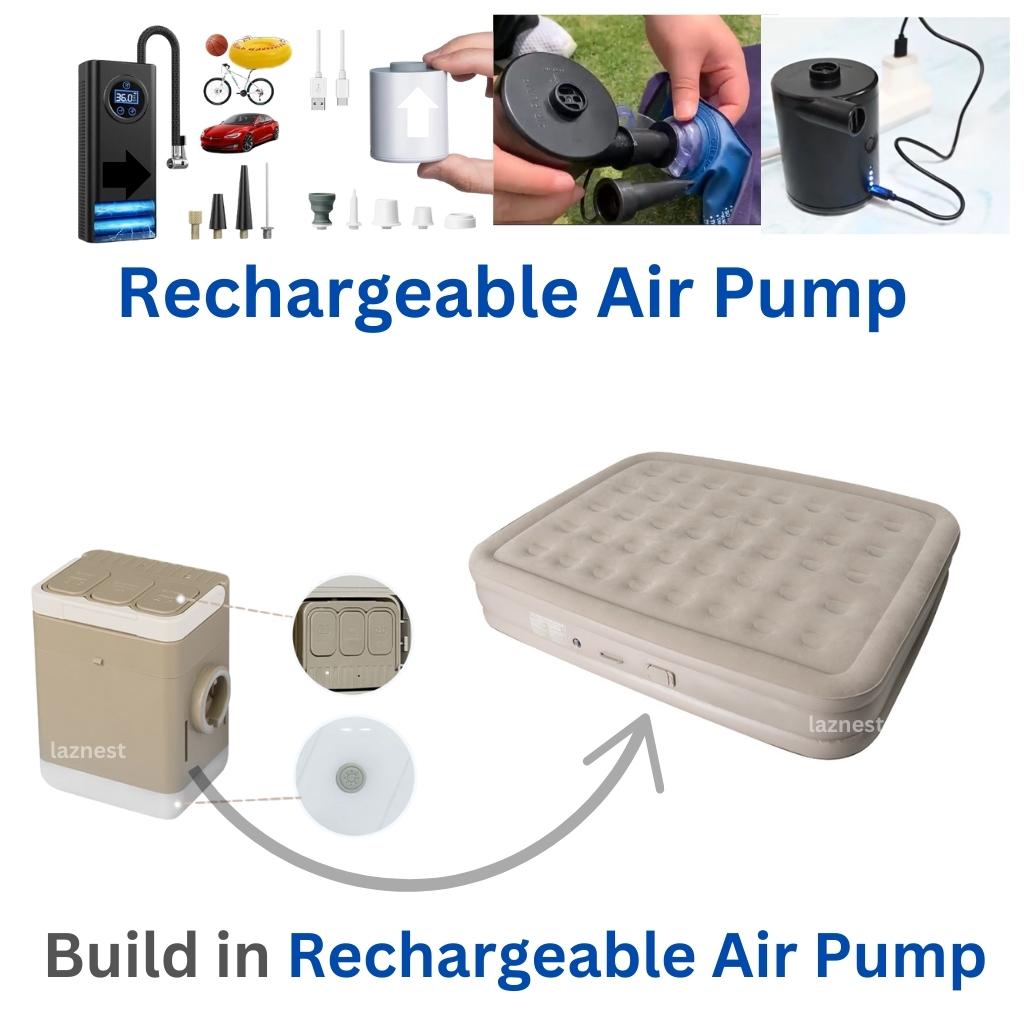
Battery-Powered Air Pump
- Power Source: Disposable or replaceable batteries (e.g., AA or D cells).
- Pros: Highly portable; no need for an outlet or charging.
- Cons: Battery costs add up; generally offers lower pressure or slower inflation than electric pumps.
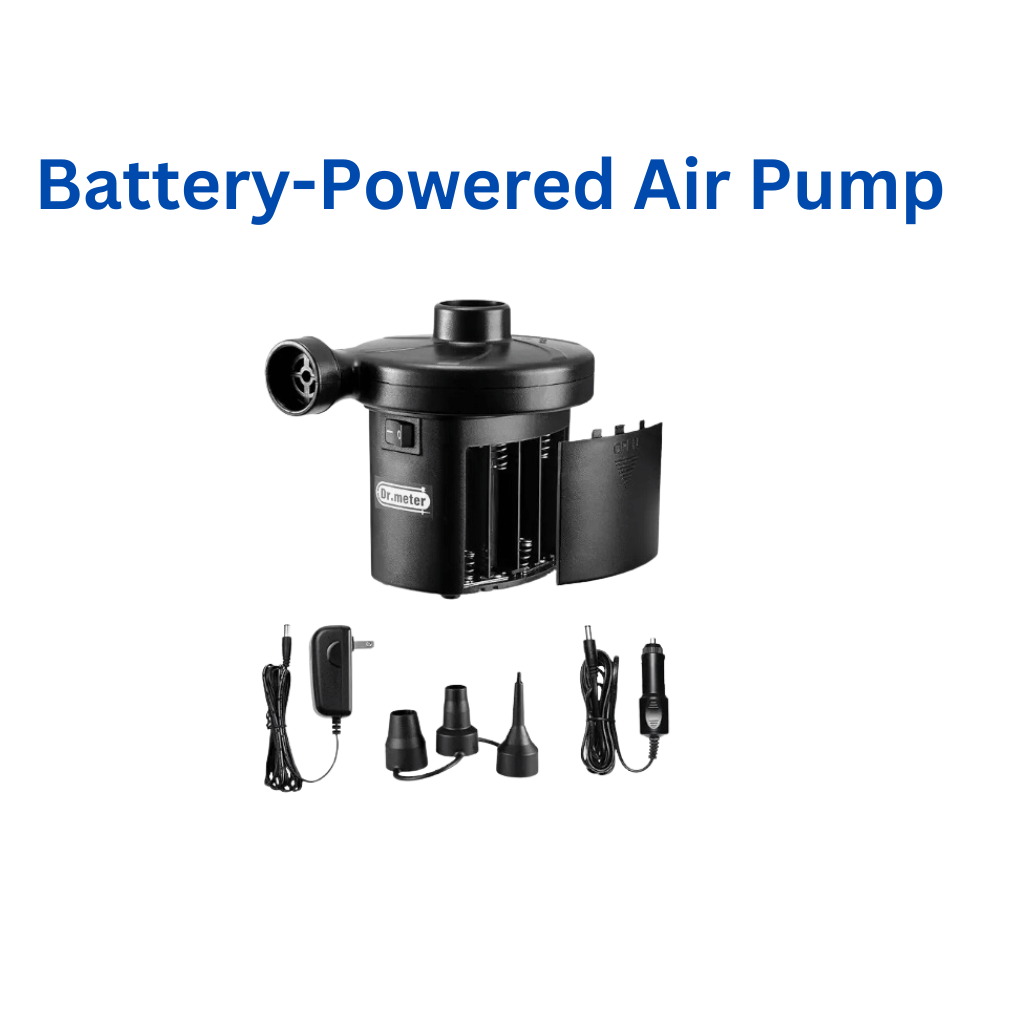
Hand Pump
- Operation: Manual pumping using a lever or piston motion.
- Pros: Reliable and simple; requires no electricity.
- Cons: Labor-intensive, slower inflation, not ideal for very large inflatables.

Foot Pump
- Operation: Manual pumping with a foot pedal.
- Pros: Hands-free operation; compact and easy to store.
- Cons: Can be tiring for large or high-pressure inflatables; slower than electric pumps.

12V DC Car-Powered Pump
- Power Source: Connects to a vehicle’s cigarette lighter or DC outlet.
- Pros: Great for road trips, camping, or beach use where a car is nearby.
- Cons: Dependent on having a vehicle; power draw can affect car battery if used extensively without the engine running.

Direct Mouth Inflation
- Method: Blowing air directly by mouth.
- Pros: No equipment needed; suitable for small products or quick top-ups.
- Cons: Inefficient and impractical for large inflatables; can be tiring.
3. How to Choose Air Pump for Inflatables
Confused by so many pump types? Proper selection balances reliability, speed, and cost, ultimately shaping your brand’s image and profitability.
Match pump choice to product size, usage frequency, and location. Electric pumps handle large inflatables. Rechargeable or battery-powered pumps provide portability. Manual pumps keep budgets low but require extra effort.
-
Evaluate Inflatable Size and Pressure Requirements
- Large or commercial inflatables often benefit from powerful electric pumps.
- Smaller floats can use hand pumps or battery-powered units.
-
Consider Portability and Location of Use
- Outdoor events or remote areas may favor a rechargeable pump or a car-powered pump.
- Indoor or on-site operations may rely on electric pumps for speed and convenience.
-
Assess Budget and Frequency of Use
- Occasional usage might justify a lower-cost manual or battery option.
- Heavy usage typically requires more durable or high-capacity pumps to save time and minimize wear.
-
Check Nozzle Compatibility
- Ensure the pump nozzle fits the selected valve type (Boston valve, Halkey-Roberts, etc.).
- Some pumps come with adapter sets to accommodate multiple valve sizes.
-
Brand Reputation and After-Sales Support
- Look for reliable pump manufacturers with warranties and customer support.
- Reputable brands often offer better build quality and spare parts availability.
By aligning product size, usage environment, and customer expectations, selecting the right pump becomes simpler. Proper valve-pump compatibilityboosts user satisfaction and reduces operational hassles in the long run.
Conclusion
Choosing the right combination of valve types and inflation methods ensures a smooth, efficient experience for both suppliers and end-users. From specialized valves like Halkey-Roberts to convenient pump options such as electric or rechargeable units , evaluating these factors helps deliver quality, reliability, and cost-effective results.
-
Comprehensive guide on different types of inflatable valves, including their structures, benefits, and best use cases. ↩
-
Analysis of inflation methods, comparing electric, rechargeable, and manual pumps for different inflatable products. ↩
-
Key differences between electric and manual pumps, focusing on efficiency, cost, and ease of use for consumers. ↩
-
Best practices for matching inflatable valve types with suitable pump options to optimize performance and user convenience. ↩

